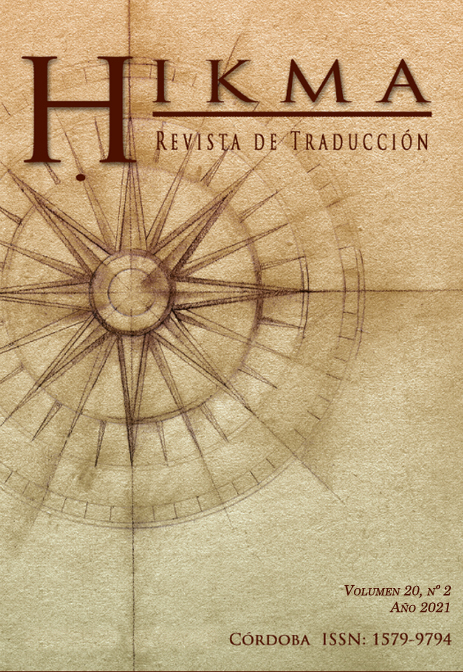From mommet to ugly: An analysis of the linguistic duality and idiolect of Tess Durbeyfield in the Spanish translations of Tess of the d’Urbervilles
Contenu principal de l'article
Résumé
The current study aims at critically exploring the resulting identity of Tess of the d’Urbervilles’ main character, Tess Durbeyfield, in the Spanish translations through the analysis of her linguistic variation. Throughout the novel, Tess is characterised by a unique duality in linguistic variation, which shapes her identity. She is capable of using both dialectal and non-dialectal marks, which differentiates her from the rest of the novel’s characters. To reach thus the goal of this research, that is, to verify whether Tess Durbeyfield’s multifaceted identity is maintained in the Spanish translations, it is essential to analyse the linguistic variation of the novel’s heroine in the target texts. For the project, the three Spanish translations that exist of the novel have been analysed (carried out in 1924, 1994 and 2017).
In order to reach this aforementioned objective, the strategies carried out by the different translators regarding linguistic variation will be analysed, focusing on the possible identity distortion that these decisions may entail in the heroine’s characterization. In order to observe Tess Durbeyfield’s idiolect and linguistic variation, all dialogues from the novel and its corresponding translations have been analysed and classified. In the project, through selected dialogues, it will be observed whether the translation strategies regarding the heroine’s linguistic variation imply a reconfiguration of Tess’s identity in the target texts
Téléchargements
Details de l'article
Les auteurs qui publient dans cette revue acceptent les conditions suivantes :
- Les auteurs conservent les droits d'auteur et accordent à la revue le droit de première publication du travail simultanément sous une Licence Creative Commons Attribution, permettant à d'autres de partager le travail en reconnaissant la paternité du travail et sa publication initiale dans cette revue.
- Les auteurs peuvent conclure des accords contractuels supplémentaires séparément pour la distribution non exclusive de la version publiée du travail dans la revue (par exemple, l'envoyer à un référentiel institutionnel ou le publier dans un livre), avec une reconnaissance de sa publication initiale dans cette revue.
- Il est permis et encouragé aux auteurs de publier leurs travaux en ligne (par exemple, dans des référentiels institutionnels ou sur leur site Web) avant et pendant le processus de soumission, car cela peut entraîner des échanges productifs, ainsi qu'une citation plus précoce et plus importante du travail publié (voir L'effet de l'accès ouvert).

